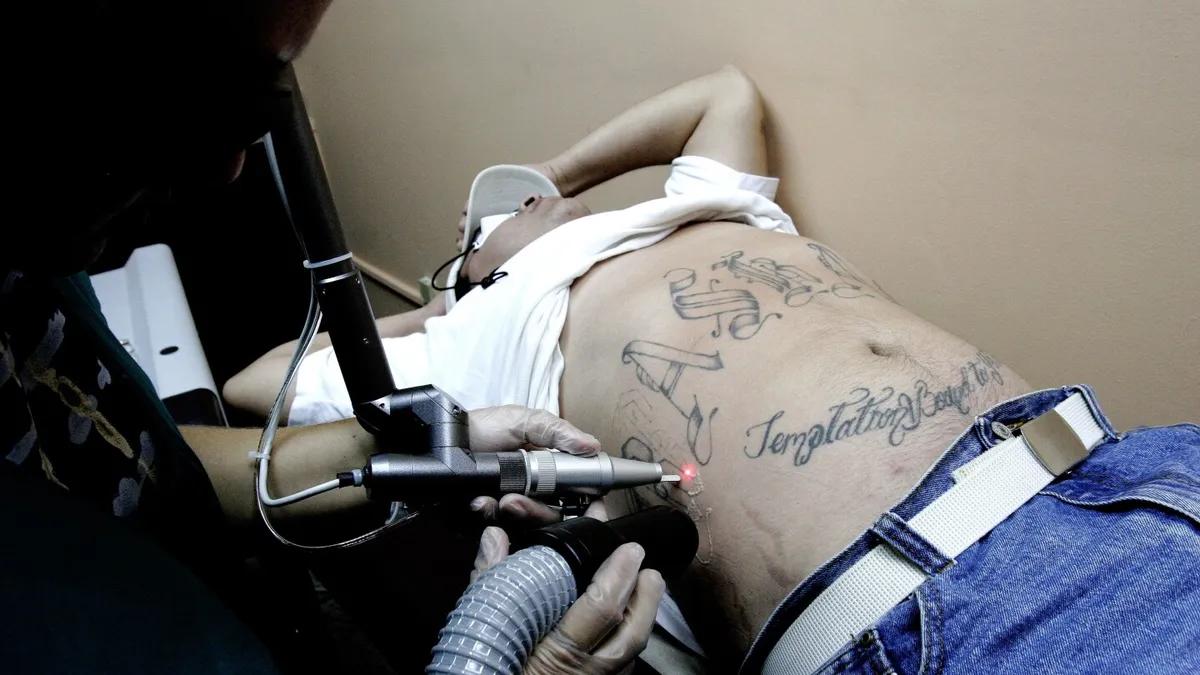
A recent incident has raised significant concern regarding the deportation of approximately 200 Venezuelan men, many of whom have tattoos that are being interpreted as indicators of gang affiliation. Defense lawyers argue that these seemingly innocuous tattoos, which include a crown over a soccer ball and an eyeball that “looked cool,” have unfairly contributed to the characterization of these individuals as members of the notorious gang Tren de Aragua.
Under an 18th-century wartime law, President Donald Trump authorized the swift removal of these men from the United States to a notorious prison in El Salvador. This law permits the deportation of noncitizens without the due process typically afforded in the legal system. Trump’s administration justified this drastic action by claiming that Tren de Aragua is “perpetrating an invasion” of the United States. However, most legal experts have dismissed this argument, pointing out that the government has failed to provide concrete evidence linking the deported individuals to criminal activities.
Tattoos are often seen as symbols of membership in various Latin American gangs. The MS-13 gang, for instance, is widely recognized for its facial tattoos. However, experts assert that tattoos are not central to the identity of the Tren de Aragua. In fact, tattoos are a popular form of body art worldwide, often devoid of any gang-related meaning. For example, a crown tattoo can be associated with both Tren de Aragua and the U.S. gang known as the Latin Kings. Nevertheless, a simple online search reveals numerous crown designs that are marketed purely for aesthetic appeal.
Common tattoos such as stars and clocks are frequently misidentified as gang symbols by law enforcement. Karla Ostolaza, managing director of The Bronx Defenders, a public defender nonprofit in New York City, emphasizes that these tattoos often do not signify any gang affiliation at all. She has represented numerous Latin American immigrants who have been targeted based on tattoos or even clothing, illustrating the bias that exists against individuals of certain nationalities. In a suburban gym, such tattoos might provoke no suspicion, but for individuals from specific backgrounds, they can be unfairly interpreted as signs of criminality.
Family members and lawyers have reported that tattoos were frequently used by U.S. officials as a basis for claiming that the men were affiliated with Tren de Aragua. Take the case of a Venezuelan man referred to in court documents as J.G.G., who mentioned that officials had indicated his tattoos suggested gang membership. J.G.G. argued that he had simply found his tattoo design online and thought the eyeball looked “cool.”
Another example is Jerce Reyes Barrios, 36, whose defense lawyer stated that authorities identified him as a Tren de Aragua member partly due to his tattoo of a crown over a soccer ball that also featured the word “Dios,” meaning God. Reyes Barrios, a former professional soccer player, chose this tattoo because the crown resembled the logo of his favorite team, the Spanish soccer club Real Madrid. A photograph included in his lawyer’s filing shows that the tattoo closely resembles the club’s logo, further highlighting the arbitrary nature of the gang affiliation claims.
The deportation of these Venezuelan men raises important questions about the criteria used by law enforcement in identifying gang members. The reliance on tattoos as evidence of criminality, without substantive proof, underscores the need for a more just approach to immigration enforcement. As the situation continues to unfold, advocacy for fair treatment and due process for all individuals, regardless of their background, remains crucial.